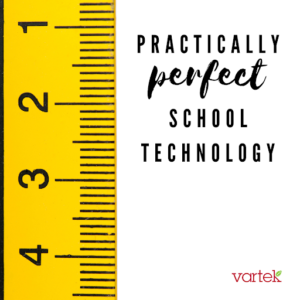 What if your classroom technology never failed? What if teachers were always excited about new technology and students consistently used tech tools in productive, innovative ways?
What if your classroom technology never failed? What if teachers were always excited about new technology and students consistently used tech tools in productive, innovative ways?
Dream on, you say? You’re right. Perfect is impossible. But practical is very possible, and now is the perfect time to move you in that direction. While classrooms and computers are in high-demand, it’s a great opportunity to make the best use of that technology and how it can drive instruction face to face and remotely.
- Revisit your technology vision. Sometimes ed tech visions get distorted, and the technology itself ends up being the goal. Now is the time to take a critical look at your tech vision to make sure it reflects curriculum and learning objectives—not the other way around. Then document the vision and share it with your academic and IT leadership teams so that the goal of instructional growth is met.
- Evaluate the effectiveness of your technology team. Does your staff have the experience, certifications, and skills to meet your school’s technology needs today and help you prepare for the next tech evolution to drive instruction in your district? Look at your team and determine gaps, then examine how you will fill the gaps.
- Develop (or update) a technology plan. Use blocks of uninterrupted time to flesh out a Strategic Ed Tech plan that includes a technology budget, asset refresh and implementation schedules, professional learning goals for teachers, and classroom integration objectives. Collaborate with your school leadership team, your tech team leader, key teachers, and thought leaders to make sure the plan is aligned with your technology and educational visions. Purposeful integration is key to learning success.
- Schedule professional learning sessions. Ongoing training is essential to successful classroom integration. The right kind of training not only gives teachers the support they need to become comfortable with new technology, it helps them use technology in a way that transforms student learning.
- Plan device and software pilots. Try before you buy. A small-scale test run of viable student and teacher tools will give you solid data for making the most effective large-scale purchases.
- Require basic technology maintenance. Over the summer and during breaks, your Technology staff should present and implement a plan for disconnecting equipment and devices to allow custodial crews to clean; repairing or replacing broken machines; and installing software, server, and network upgrades to keep the infrastructure robust and reliable.
Vartek utilizes these best practices with our schools. If you’re looking for a strategic partner with more than 30 years of experience assisting schools with advancement in technology integration and stellar IT support, Vartek is here.
Fill out this form or call us at 800-954.2524 to get started today.